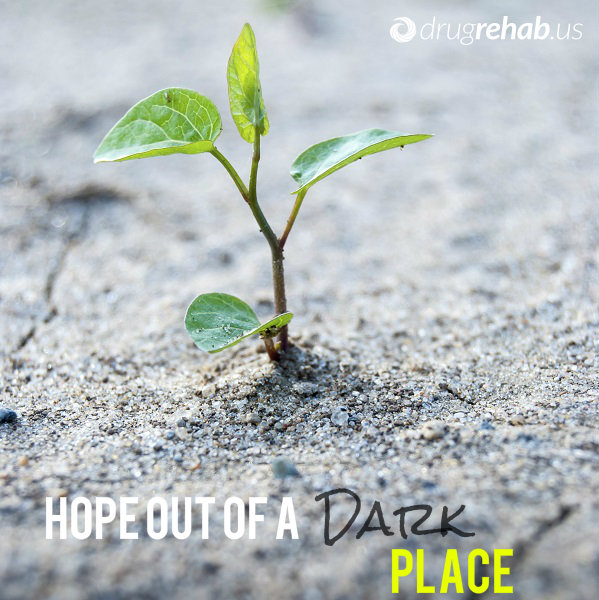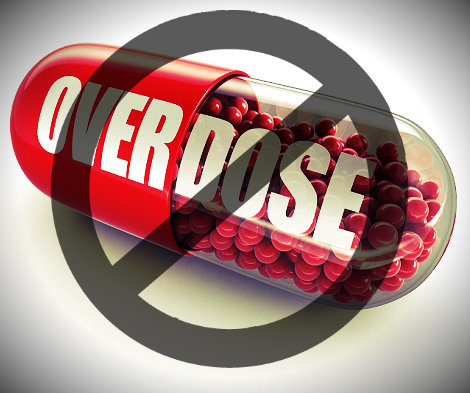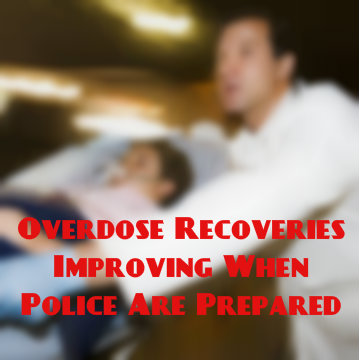Prescription drug abuse is responsible for over half of all drug overdose deaths in the U.S., and more people die from drug overdoses than gunshot wounds or motor vehicle accidents. The extent of the issue can’t be overstated, and this is why legislators, researchers and treatment providers are going to such lengths to tackle the growing problem.
In May 2014, the FDA approved a medication that can be used by anybody—even without medical training—to counteract opioid overdose, and other recently approved medications also offer promise for reducing the number of lives lost to prescription drug abuse. However, as with similar approaches, the psychological elements of addiction still need to be addressed in order to truly tackle the problems gripping the nation.
The Prescription Drug Abuse Epidemic
Prescription drug abuse is largely driven by the erroneous idea that prescription drugs are somehow “safe” because they’re prescribed by doctors. The problem is that many prescription drugs are addictive and only safe when used as suggested by physicians. As addiction develops, users are increasingly less likely to heed the suggested dosage advice, instead taking more and more of the substance to satisfy their growing cravings.
The majority of prescription drug abuse involves opioid medicines (substances with the same overall effects as heroin), but due to how widespread their abuse is, approximately five times as many people die from overdose on prescription opioids every year than from heroin overdose. Even combining heroin and cocaine overdose deaths doesn’t approach the number of deaths caused by prescription opioid overdose. Stopping these deaths is a huge priority for public health.
New Medications Offering Hope For Stopping Prescription Drug Overdoses
Evzio – The Opioid Overdose Reversal Shot
 Evzio is an approved opioid overdose treatment, offering a single dose of naloxone hydrochloride and coming in a hand-held, auto-injection format. Naloxone is an opioid antagonist, meaning that it counteracts the effects of opioid drugs and can be used to quickly reverse the effects of overdose.
Evzio is an approved opioid overdose treatment, offering a single dose of naloxone hydrochloride and coming in a hand-held, auto-injection format. Naloxone is an opioid antagonist, meaning that it counteracts the effects of opioid drugs and can be used to quickly reverse the effects of overdose.
The drug has been used in emergency treatment of overdose for some time, but the benefit of the new formulation of the medication is that it doesn’t require a trained physician or medical professional to administer, meaning that a single shot could be kept in homes for use in emergencies.
The approach isn’t perfect—after all, the true problem is what caused the individual to take a dangerously high dose in the first place—but there is no doubt that quicker access to corrective medications could reduce the numbers of deaths.
Naltrexone Implants – Reducing Cravings And Stopping Addiction?
Naltrexone is an opioid receptor antagonist, which means that it effectively “blocks” the parts of the brain opioid drugs use to create their effects and thereby reduces cravings. The medicine has been used for some time for both heroin and alcohol addiction, but by giving the drug in implant form, it could potentially be more effective for curbing addiction.
BioCorRx uses the medicine alongside counseling in its Start Fresh Program, and the implant (inserted into the lower abdomen) gradually releases doses for a period of six months. According to the treatment provider, the approach is so effective that 85 percent of patients who go through all 15 sessions within six months quit abusing dugs, and some report that cravings disappear within just a few hours of having the implant inserted.
However, it’s worth noting that clinical trials haven’t been conducted on the program, so the very high success rate is likely an overestimation.
The Importance Of Psychological Treatment For Addiction
The new approaches to reducing the deaths from prescription opioid abuse are definitely promising, but Evzio in particular misses an important element of treatment for addiction. Having the overdose-counteracting shot in the homes of those at risk is obviously beneficial and will reduce the amount of needless deaths, but the underlying problem is effectively unaddressed.
Without psychological treatment to get to the bottom of what causes the individual to abuse prescription medications in the first place, the same (internal or external) pressures will undoubtedly crop up again after a near-overdose event, and without the psychological tools to deal with these pressures in a healthy way, more drug abuse is likely to result. It’s good to reduce the amount of fatalities from prescription drug abuse, but if we’re to make a substantial dent in the numbers, it is the addiction that needs to be addressed, not just the physical risk.
The BioCorRx program is promising because it does provide psychological treatment in addition to medication to help control cravings, although there are undoubtedly exaggerations with regards to the program’s success rate. However, by providing 15 counseling sessions, the program is able to offer goal-focused support to addicts, and help them take decisive steps toward lasting sobriety.
Understanding The Roots Of Addiction To Successfully Overcome It
New medications for tackling prescription opioid abuse have their uses, and anything with the power to reduce the deaths from opiate abuse should be wholeheartedly supported, but it’s essential to remember that addiction isn’t solely a physical issue.
In addition to raising awareness of prescription drug abuse itself, people need to recognize that the true roots of addiction are psychological, and it can’t be fixed with a simple pill, injection or implant. Overcoming addiction takes dedication. There are no short cuts.
There Is Hope However, Out Of That Dark Place To A Place With Light!
Overdose deaths caused by heroin and other opioid drugs are on the rise across the U.S. Opioids include illegal heroin, but also many powerful and addictive prescription painkillers. All of these drugs are easy to abuse, get addicted to and overdose and die from using. An injection with a drug called Naloxone can reverse such an overdose and prevent a tragic death. If you have someone in your life addicted to or abusing opioids, you need to know about this life-saving overdose antidote.
When Naloxone Can Be Used
 Naloxone is a drug that is related to opioids and that is capable of reversing the effects of certain opioids on the body. It can be used after surgery to reverse the effects of opioids given for pain and sedation. It can be given to infants born with a dependency on opioids. A mother’s drug use causes this and the Naloxone helps to relieve the infant’s withdrawal symptoms. For someone overdosing on an opioid, Naloxone can be injected with a needle or with an auto-injector, called Evzio. The auto-injector is similar to devices used for severe allergic reactions and can be used by anyone without medical training.
Naloxone is a drug that is related to opioids and that is capable of reversing the effects of certain opioids on the body. It can be used after surgery to reverse the effects of opioids given for pain and sedation. It can be given to infants born with a dependency on opioids. A mother’s drug use causes this and the Naloxone helps to relieve the infant’s withdrawal symptoms. For someone overdosing on an opioid, Naloxone can be injected with a needle or with an auto-injector, called Evzio. The auto-injector is similar to devices used for severe allergic reactions and can be used by anyone without medical training.
Naloxone Saves Lives
Naloxone has been successful in saving lives. The Centers for Disease Control and Prevention (CDC) reports that thousands of doses of Naloxone have been distributed in community groups dedicated to preventing overdose deaths. Because of this distribution, more than 10,000 people have been saved from life-threatening overdoses. Community groups, first responders and law enforcement officers are being given injectors in greater numbers to administer life-saving Naloxone.
Can Anyone Get Naloxone?
The important question for anyone who cares about an opioid drug abuser is about access to the overdose antidote. Emergency responders and police have them, and injection devices are easy to use. Can anyone get access to a Naloxone injector? Should you carry one with you to save your loved one’s life in the event of an unintentional overdose? Many advocates for greater access to the overdose antidote say yes.
Community programs are already working toward getting more Naloxone injectors into the hands of those who need it. It is a prescription medication, but it can be prescribed to anyone who is at risk of having an overdose. The reach of such community programs, however, is currently limited. These programs are run mostly through needle exchange programs and target inner-city heroin addicts. More access is needed in greater areas and for people abusing prescription painkillers, not just heroin. Support for expanding access is high, but funds are low.
To get a Naloxone injector for yourself or a loved one, you need to either find a community program near you that will distribute it to those in need, or find a physician willing to write you a prescription for one. If you don’t know where to start, speak to your primary care doctor for more information or referrals. Also keep an eye out for non-prescription Naloxone. Because of the great need for this life-saving drug, the Food and Drug Administration (FDA) is considering the development of an over-the-counter alternative.
Opioid addiction is a terrible disease. It can hook anyone and it can do so quickly. Getting over an addiction to an opioid is extremely challenging. Anyone abusing these drugs is at risk for an overdose. Dying from an overdose can even occur with the first use of one of these drugs. If you know someone who abuses any kind of opioid, the overdose antidote should be on your radar. Look into the possibility of getting access to the injector. It could save the life of someone you love.

Every day in the U.S., 105 people die as a result of drug overdoses. Both prescription medications and illicit drugs are to blame, but regardless of the cause, taking steps to reduce the number of unnecessary deaths should be a priority for lawmakers across the country.
One common legal approach to the problem is a “Good Samaritan” law, which promises legal immunity for those who notify authorities of a drug overdose in progress.
Louisiana, despite recently passing a fairly extreme sentence for repeat heroin dealers, has become the 20th state to adopt such a law, and has thereby taken a decisive step in reducing the suffering caused by drug abuse.
Louisiana’s Good Samaritan Law
There were a few changes made to the new rules at the last minute. One of these was that the individual who calls for help will have to stay in the location, and must provide his or her full name to officials upon request.
Paramedics are also allowed to carry naloxone, an antidote to opiate overdose with the potential to save lives all around the country if made widely available.
Furthermore, in a reasonable caveat to the new rule, you can’t be granted immunity if you’re the person who administered the drug that led to the problem.
Although this restriction may still lead to people not calling for help if they’re at fault, it’s clear that people who administer dangerous doses of drugs in unknown circumstances should not be granted immunity without a thorough investigation of the circumstances.
Reporting OD’s And Fear Of Police Involvement
“Research shows that the most common [reason] people cite for not calling 911 is fear of police involvement,” said Louisiana Sen. Sharon Weston Broome. This goes to the heart of the problem the Good Samaritan law was designed to address: these people need urgent care, but the fear of legal consequences delays or even prevents people on the scene from calling 911. In this sense, the law makes it clear that the priority is saving lives, and should drastically increase the proportion of cases where paramedics are able to get on the scene in time.
Louisiana’s Less-Than-Progressive Drug Laws
It’s hard to see an issue with Good Samaritan laws, as long as you’re of the opinion that people struggling with addiction don’t deserve to die because of potential legal consequences, but not all of Louisiana’s rules are underpinned by this forward-thinking philosophy. A perfect example of the more extreme laws is one passed earlier in May that set the maximum sentence for repeat heroin dealers at 99 years. The original bill called only for doubling of the penalties from five years to 10, and critics of the new law have pointed out that murderers and rapists will be in jail for less time than someone caught dealing heroin twice.
The Good Samaritan law is a step in the right direction, but after taking such a monumental step backward with the punishment for heroin dealers, it’s hard to feel as though things are really getting better in Louisiana.
Drug Laws Should Always Focus On Saving Lives
The Good Samaritan law is an excellent example of the sort of drug laws we need. At its heart, it’s about saving lives. Much of the criticism of the ongoing war on drugs revolves around its focus on punishment rather than on providing help for those in need, and for the country as a whole, the increased number of Good Samaritan laws is an undeniably positive thing.
Recently, Georgia passed a similar version of the law, and it seems inevitable that more states will follow.
The Fix’s coverage of the story includes a poignant quote from Kathy Fletcher, a woman who accidently overdosed on prescription medication: “Naloxone saved my life. It should be available to the average citizen just like the EpiPen and glucagon because it’s just as safe, and the faster we get it to people, the more [lives] we save.”
Critics of naloxone and Good Samaritan laws in general may feel as though they’re a tacit approval of drug use, as if the law were saying, “it’s OK if you’re a drug user too, we’ll ignore it if somebody is in danger” or “don’t worry if you overdose, we’re making the cure more widely available so you can survive to nearly OD again.”
This is an oversimplified, easily refutable version of the actual reason for these types of rules.
The complex issue of addiction means that we can’t just lay the blame on the drug users, punish anybody trying to save their lives, and restrict access to a potentially life-saving medication.
Because people are trapped in the cycle of addiction, unable to break free no matter how hard they try, we can’t treat them like social pariahs when they’re more in need of help than ever before. We need to swallow our moral indignation and focus on helping thosein need.
Read Our Other Addiction News Posts
Police officers are often the first medical responders on the scene of drug-related overdose emergencies. A new study published online in the journal Drug and Alcohol Dependence shows that the preparedness of police officers when responding to an overdose could affect the outcomes for the individual as well as the community.
The study focused on areas of Rhode Island and Connecticut that have been experiencing growing numbers of prescription opioid overdose emergencies. Many of these were relatively sparsely populated suburban and rural areas, where emergency medical technicians (EMTs) and paramedics are a more limited resource. In these areas, police officers are more likely to be first medical responders than in areas with more hospitals and associated emergency medical personnel.
Traci C. Green, Ph.D., a research scientist at the department of emergency medicine for Rhode Island Hospital, was the lead investigator for the new study. Green and her fellow researchers conducted interviews with law enforcement officers. The interviews included questions about personal attitudes toward drug users and victims of overdoses, as well as questions about the resources and protocol for police officers who are the first responders to the scene of an overdose.
Study Finds Frustration And Confusion Among Law Enforcement
 They discovered a range of personal attitudes among police officers toward drug users, as well as confusion about what treatment police officers are expected and authorized to perform at the scene of drug-related emergencies. Many police officers are equipped only with basic first aid and CPR training, and can do little to save the life of an overdose victim in critical condition.
They discovered a range of personal attitudes among police officers toward drug users, as well as confusion about what treatment police officers are expected and authorized to perform at the scene of drug-related emergencies. Many police officers are equipped only with basic first aid and CPR training, and can do little to save the life of an overdose victim in critical condition.
Some police officers revealed negative attitudes about people who use drugs, particularly repeat offenders. Others were empathetic toward those suffering from drug addiction but also expressed frustration with the lack of comprehensive treatment and other resources for drug addicts. Quite a few believed that the cycle of addiction had a significant negative impact on the individuals in their community as well as on the community as a whole. Many police officers in the study also revealed frustration about the limited training and resources they themselves have when responding to an overdose scene.
Frustration with the growing problem of prescription drug abuse and overdose is understandable. In 2010, more than 8.76 million people reported abusing prescription medicine, and in 2008, there were more than 36,000 deaths from drug overdoses, most of those caused by prescription drugs. In fact, prescription painkillers in the form of opioids are responsible for three quarters of all overdoses from prescription medications. Cocaine and heroin combined resulted in fewer overdose deaths than prescription opioids.
Giving Police Officers Tools And Training For Overdose
In some communities around the country, police officers and other responders are given Naloxone, which is the standard drug overdose antidote used by paramedics. Naloxone helps to reverse the effects of prescription opioids and to restore breathing for people in respiratory arrest. The current White House Office of National Drug Control Policy supports training more responders in the use of this tool and making it available to those in a position to be first medical responders.
The responses in the Rhode Island Hospital study suggest that police officers will be more effective in the role of first responders with increased training and improved understanding of their responsibilities. In more rural areas, police officers may be the only trained medical responders who are able to get to overdose victims during the critical window when Naloxone or other treatment methods are most likely to be effective.
Further empowering police officers to be more effective responders may also help to improve the relationship between law enforcement and the community in many areas. It may relieve some feelings of frustration and helplessness on the part of police officers by allowing them to have a more active role in saving lives. It may also improve community views on law enforcement when officers at the scene are able to administer life-saving aid. Some of the police officers interviewed during this study felt that the ability to administer Naloxone could be a critical element in positive police-community relations.
Read More About ER Visits Rising Due To Drug Use
20 Feb 2014
How Depression Increases Risks For Drug Overdose
A drug overdose occurs when an individual takes enough of a substance to overload the body’s organ systems and create a sharp drop in the ability to sustain life. Some people die from the impact of an overdose, while others manage to survive with or without medical assistance. In a study review published in January 2014 in the journal Drug and Alcohol Dependence, a team of Italian and British researchers sought to determine how the presence of major depression or some other depressive disorder affects the likelihood that a drug user will experience a non-fatal overdose.
 ER Treatment For Overdosing On Painkillers
ER Treatment For Overdosing On Painkillers
The federal Centers for Disease Control and Prevention (CDC) track drug overdose rates across the U.S. According to the CDC’s latest available statistics (from 2011), roughly 2.5 million Americans require emergency room treatment for an overdose each year. More than half of all cases (about 1.4 million) occur in people using a medication rather than an illegal substance. Medications specifically highlighted for their presence in overdose cases include opioid narcotic painkillers and sedative-hypnotics called benzodiazepines.
Some people unintentionally overdose on drugs or medications while involved in prescribed or recreational use. However, others overdose intentionally while attempting to commit suicide. More than half of all people successfully or unsuccessfully treated for an overdose are men or boys. Slightly more than four out of every five overdose cases occur in adults over the age of 20.
Types Of Depressive Disorders
In addition to major depression, the depressive disorder category of mental health ailments (which comes from terms established by the American Psychiatric Association) includes conditions called persistent depressive disorder, premenstrual dysphoric disorder and disruptive mood dysregulation disorder. The category also includes substance/medication-induced depressive disorder, a term specifically used to identify depression cases triggered by short- or long-term drug, alcohol or medication intake.
All depressive illnesses include episodes of “down” moods that substantially damage the ability to achieve a sense of well-being or function normally from day to day. The intensity and duration of these episodes vary according to both the effects of each specific illness and the way in which that illness manifests in the individual. People affected by another group of conditions, called bipolar disorders, also experience periods of a prominently “down” mood. One bipolar disorder in particular, called bipolar I disorder, produces periods of depression equally as severe as those found in people diagnosed with major depression.
Depression’s Impact On Non-Fatal Overdoses
In the study review published in Drug and Alcohol Dependence, researchers from five British and Italian institutions used a comprehensive analysis of previous research efforts to examine how the presence of a depressive disorder affects an individual’s non-fatal overdose risks. This analysis, based on seven studies, included essentially all commonly available information published on a related topic in the U.S. or Europe through September 2012. All told, the studies under consideration included 12,019 people living in the U.S., Australia, Sweden, Canada and Norway.
The researchers used two measurements to assess the impact of depression. First, they compared the overall rate of non-fatal drug overdose among depressed people to the rate of non-fatal overdose among people not affected by depression. They also calculated the odds that any given depressed drug user will overdose non-fatally and compared those odds to the chances that any given non-depressed drug user will overdose non-fatally.
The researchers found that depressed individuals overdose non-fatally 7 percent more often than non-depressed individuals. While this difference may seem small, it is actually highly significant in statistical terms. The researchers also found that, when compared to a non-depressed drug-using person, the odds that any given depressed drug-using person will experience a non-fatal overdose are 1.45 to 1.
Potential Factors Why Depression Leads To Higher Risks For Non-Fatal Drug Overdoses
The authors of the study review published in Drug and Alcohol Dependence don’t know for sure why depressed people have higher risks for a non-fatal drug overdose; potential factors may include higher drug dosages in depressed people and higher chances for multidrug use (a known contributor to overdose) in depressed people. They also note that no one can assume that the same situation holds true for fatal drug overdoses until someone comprehensively explores that issue. Still, they believe their findings clearly show that the connection between depressive illnesses and non-fatal drug overdoses is real. They also believe that the same connection probably exists between depressive illnesses and fatal drug overdoses.
Read More About New Research For Depression Treatment For Left Handers
Around three people each hour lose their lives due to overdosing on prescription medications. In fact, more people die from prescription medication abuse or accidental overdose than many other causes, launching the problem to epidemic status. Add to that the rising numbers of senior adults who take incorrect dosages of prescription medications and teens or 20-somethings who find the drugs at home and experiment without knowing the dangers.


